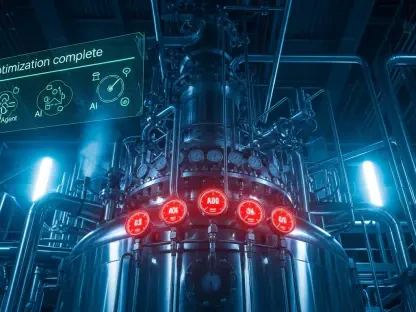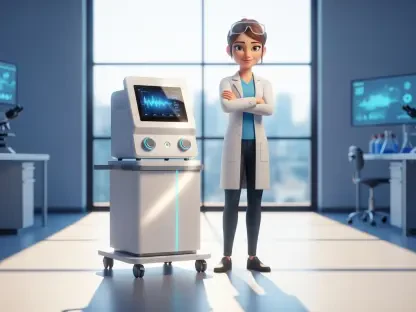The global shift toward electrification is reshaping energy consumption patterns, with batteries becoming crucial for electric vehicles (EVs) and energy storage systems (EES). This surge in demand underscores the need for high-quality batteries, driving advancements in manufacturing processes. One of the most significant strides in this area is the integration of Non-Destructive Testing (NDT) technologies and Automated Defect Recognition (ADR) enhanced by Artificial Intelligence (AI).
The Growing Need for Quality Control in Battery Manufacturing
Battery production is witnessing unprecedented growth, spurred by its essential role in EVs and EES. This accelerated demand has placed immense pressure on manufacturers to scale up production while maintaining impeccable quality standards. In 2022 and 2023, global investments in battery production reached a staggering USD 195 billion, emphasizing the magnitude of the industry’s expansion. To meet these challenges, battery manufacturers increasingly rely on sophisticated technological solutions to ensure product reliability and efficiency.
NDT technologies like industrial X-ray and computed tomography (CT) have emerged as pivotal tools in maintaining battery quality. These technologies enable manufacturers to inspect battery components without causing any damage, thus preserving product integrity while identifying potential defects early in the production process. The non-destructive nature of these inspections means that every single battery can be scrutinized for defects before any issues become critical, aligning with the industry’s stringent quality assurance protocols.
Benefits of X-ray and CT Inspections
Industrial X-ray and CT inspections provide a detailed view of the internal structure of batteries, which is crucial for early defect detection. Identifying issues such as cracks, cavities, and misalignments at the outset can significantly reduce the risk of product recalls and enhance overall reliability. For instance, electrode misalignments, which can lead to dangerous thermal events, can be detected and rectified before the batteries leave the production floor, safeguarding both end-users and the manufacturer’s reputation.
The high-resolution 3D images generated by CT scans allow for an in-depth analysis of critical battery components like electrodes and separators. This granular level of scrutiny is vital for ensuring safety and performance. Batteries are complex assemblies where even the smallest imperfections can lead to failure; thus, the ability to visualize and analyze their internal structures without disassembly is invaluable. Therefore, NDT technologies play a crucial role in not just quality control but also in advancing the science of battery manufacturing.
AI-Enhanced ADR: Revolutionizing Battery Inspections
Integrating ADR systems with AI significantly enhances the efficiency of battery inspections. AI-powered software automates the identification of defect patterns, reducing the need for manual assessment and speeding up the inspection process. The automation facilitated by these systems allows human inspectors to focus on more intricate tasks that require a nuanced approach, thus elevating the overall efficiency and accuracy of quality control procedures.
Machine learning algorithms train ADR software using real scan data, continuously refining its defect recognition capabilities. This continuous learning process ensures that the software stays ahead of evolving defect patterns, enabling it to quickly and accurately identify issues. Over time, this results in consistent quality control across production batches, ensuring that each battery meets the high standards required for performance and safety.
Seamless Integration into Production Lines
Introducing NDT methods into existing production lines requires meticulous planning to ensure compatibility. Automation plays a key role in this integration, as it allows for the seamless incorporation of data analysis tools and inspection systems into the workflow. This ensures that the transition to more advanced quality control mechanisms is smooth and does not disrupt ongoing production activities.
Compliance with industry standards is another critical aspect of integrating NDT technologies. Manufacturers must ensure that their products meet regulatory requirements to gain market acceptance. This often involves investing in workforce training to handle new technologies effectively, thereby ensuring a smooth transition and consistent product quality. By aligning with industry standards, manufacturers can also achieve certifications that validate the quality and safety of their batteries, further enhancing their marketability.
Environmental and Cost Benefits
One of the most notable advantages of NDT technologies is the reduction of waste. By identifying defects early in the production process, manufacturers can minimize material waste and rework costs, promoting more sustainable manufacturing practices. This early detection not only conserves resources but also leads to significant cost savings. NDT initiatives thereby align with broader environmental goals, facilitating a greener manufacturing landscape.
NDT technologies also support the recycling and repurposing of used batteries. By facilitating the detailed inspection of battery components, these technologies enable the identification of parts that are still viable for reuse, contributing to environmental sustainability. This capability is particularly valuable in the context of second-life applications for batteries, where components repurposed from used batteries can be integrated into new products, extending their lifecycle and reducing the environmental impact of battery disposal.
Case Study: Waygate Technologies’ Collaboration
A practical example of these advancements can be seen in Waygate Technologies’ collaboration with an Asian battery manufacturer. The company implemented advanced CT testing systems equipped with high-resolution imaging and AI-based ADR software to address electrode alignment issues in battery cells. This collaboration highlights the practical benefits of integrating advanced NDT and AI technologies into battery manufacturing processes.
The ADR software, customized for statistical analysis, drastically reduced the manual effort required and improved production efficiency. The ability to scan multiple cells simultaneously and the reduction in scanning times exemplify how these technologies can revolutionize battery production processes. By enabling faster and more accurate inspections, Waygate Technologies’ solutions have set a new benchmark for quality control in battery manufacturing.
Automation and AI: The Future of Battery Manufacturing
The integration of ADR and AI-enhanced software is a game-changer in the realm of battery manufacturing. Automation not only speeds up the inspection process but also ensures a higher degree of accuracy and consistency, translating into better product quality and increased production rates. AI-driven systems optimize the entire workflow, making it possible to meet the growing demand for high-quality batteries more effectively.
NDT technologies are becoming standardized solutions for ensuring battery integrity and performance. Their ability to deliver detailed internal analyses is indispensable for modern battery production, supporting manufacturers in their quest to meet growing demand and stringent quality standards. As these technologies continue to advance, they will likely set new industry benchmarks, driving further improvements in battery quality and manufacturing efficiency.
Sustainability and Technological Investments
The global transition to electrification is altering energy consumption patterns, with batteries playing a vital role in electric vehicles (EVs) and energy storage systems (EES). This escalating demand for batteries accentuates the need for high-quality products, spurring advancements in manufacturing techniques. A notable development in this field is the adoption of Non-Destructive Testing (NDT) technologies and Automated Defect Recognition (ADR), both of which are greatly enhanced by Artificial Intelligence (AI).
NDT technologies provide the ability to inspect and analyze battery components without causing any damage, ensuring the integrity and safety of the products. By identifying defects early in the manufacturing process, these technologies help maintain high standards and prevent any potential failures. Automated Defect Recognition (ADR) adds another layer of precision by enabling machines to detect and classify defects with high accuracy, reducing human error and increasing efficiency.
The integration of AI further revolutionizes this process. AI algorithms can learn from vast datasets, improving the accuracy and speed of defect detection over time. This predictive capability allows manufacturers to proactively address issues before they become problematic, ultimately enhancing product reliability and lifecycle.
In summary, as the world moves toward electrification, the demand for superior batteries is prompting the adoption of advanced testing and recognition technologies. Enhanced by AI, these developments are crucial in maintaining the high quality and reliability necessary for the continued growth of EVs and EES.









